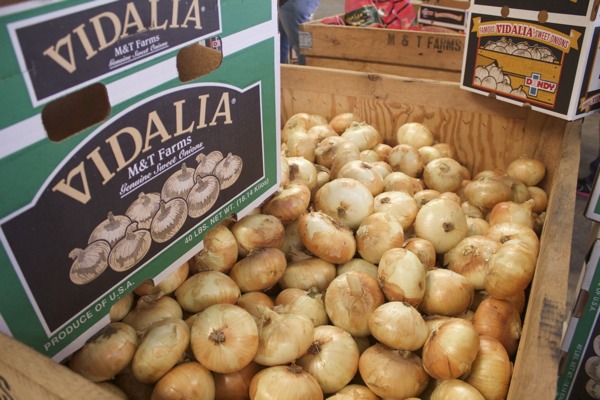
By Clint Thompson
Vidalia onion producers have begun harvesting the early maturing varieties this year, and Chris Tyson is excited about the potential of this year’s crop.
“The Vidalia onion crop definitely looks favorable this year. We are anticipating a quality harvest,” said Tyson, University of Georgia Cooperative Extension area onion agent at the Vidalia Onion and Vegetable Research Center in Lyons, Georgia. “Frequent and heavy rains created some adverse conditions earlier in the season, but growers have managed their crop well. They’ve done a great job managing their fertility and fungicide programs despite the weather.”
Growers started harvesting their earliest varieties in the beginning of April. The peak of harvest will occur near the end of the month.
There is optimism despite some localized outbreaks of downy mildew disease in the Vidalia Onion zone in Southeast Georgia, according to Bhabesh Dutta, UGA Extension vegetable plant pathologist. Severe and widespread cases have not been reported. He warns, however, things can change quickly with respect to infections in newer areas, as harvests continue to ramp up over the next few weeks.
“This all depends on how diligently our growers monitor their crops for initial infection and how aggressive they are on their protective fungicide spray schedules,” Dutta said. “Our onion growers have been on top of their game for the most part with respect to timely protective fungicide sprays. This in combination with some warm, clear weather may help reduce the onset or severity of downy mildew.”
Dutta said the first symptoms of downy mildew occur on older leaves as light green to pale yellow, which turn to tan and brown as the lesion ages. In Georgia, early symptoms can be diamond-shaped lesions that are mottled with pale and green areas interspersed. As colonization progresses, lesions may girdle the entire leaf. This could cause the total collapse of leaf tissues. Infected bulbs are reduced in size and typically don’t store well. In severe cases, 100% yield losses have been reported.
“Although bulb symptoms are rare to none, foliar infection and secondary pathogen colonization result in bulbs that are reduced in size and more often with internal rot,” Dutta said. “Healthy appearing bulbs from a downy mildew-infected crop do not store well and can get often discarded due to the internal rot.”









